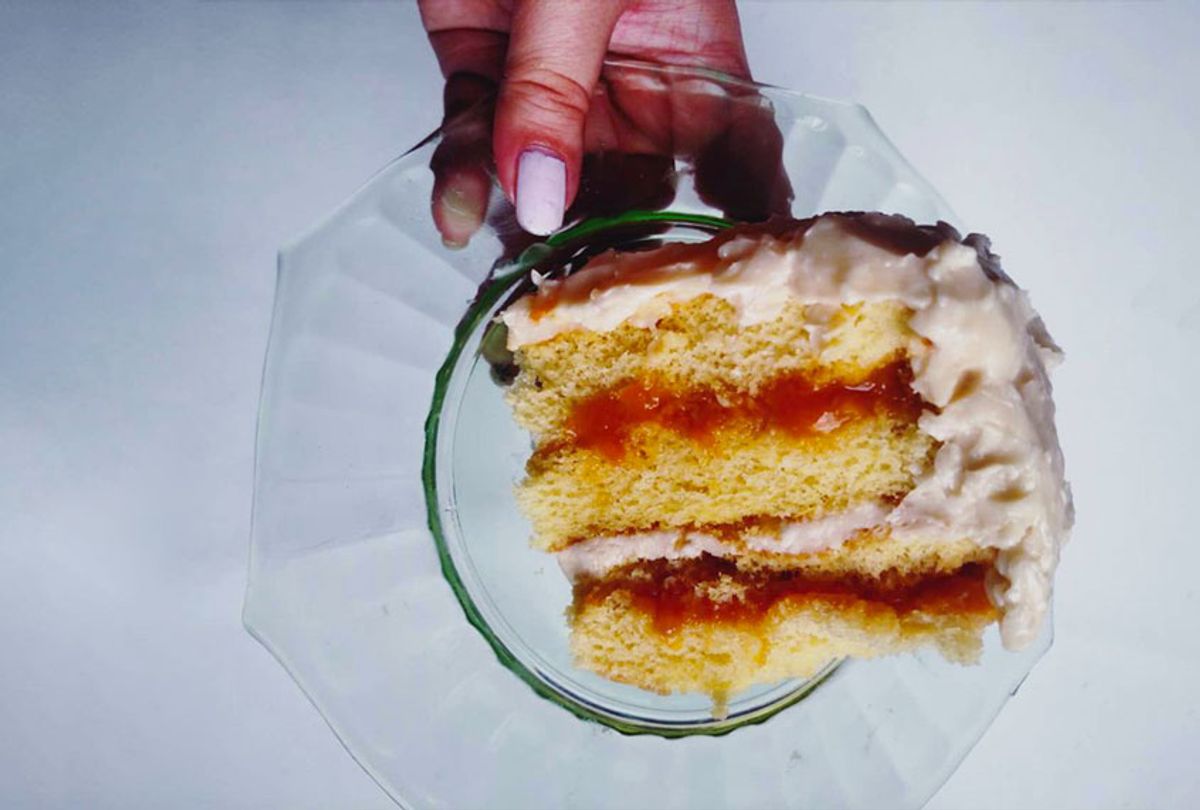Another weekend of stay-at-home orders means another opportunity for project baking; but if I'm being honest, last weekend's homemade dark chocolate and sea salt babka left me wanting something that was a little less of, well, an ordeal. No waiting for dough to proof and rise and no delicately twisting flimsy bits of pastry praying they don't shred between my forefinger and thumb.
Poking through my pantry, I realized I had a box of Duncan Hines yellow cake mix languishing in the back, which is great. To build on culinary goddess Ina Garten's philosophy of "store-bought is fine," in this case I think "store-bought is excellent." While maybe not the stuff of foodie's dreams, these mixes do exactly what you want from them: the cakes have a solid texture and don't slump in the middle.
And, with a few little adjustments, you can create a dessert that no one will know came out of a box.
Adjust that batter
Most boxed cake mixes require only the addition of oil, eggs and water. But I suggest you substitute an equal amount of milk — or an equal amount of buttermilk, plus two tablespoons — for the water. This will give the cake a deliciously rich texture. You can also substitute coffee (not hot; room-temperature or cold) for the water, to add an extra layer of flavor to the batter, especially if it's a chocolate mix.
If you prefer a thicker, moister cake, you can add an additional egg yolk to the mixture. Additionally, a tablespoon of vanilla extract does wonders for making a cake taste homemade.
Mix in some taste bombs
Lemon zest and blueberries; miniature chocolate chips and marshmallows; shaved carrot, raisins, crushed pineapple and a teaspoon of cinnamon. Think about what flavors you'd like in your finished product and raid your pantry and fridge for some extras to add to your batter. A few tips: make sure you use add-ins of the miniature (or finely chopped and shaved, when it comes to large produce) variety, and before adding them to the batter, stir them a tablespoon of flour. This ensures that the add-ins will blend better with the batter and won't sink to the bottom of the cake while baking.
Layers!
Layered cakes are impressive, but can also be a little intimidating to execute. So, let's break them down. Most boxed mixes make enough batter for two 9-inch cake tins. You can slice these in half, horizontally, to create a beautiful four-layer cake. There are a lot of "hacks" online for how to do this — dental floss, tooth picks, skewers — but honestly, the easiest way to slice your cake is slowly and with a short, sharp knife. This Jamie Oliver tutorial is quick and easy-to-follow.
Once your layers are sliced, it's time to fill them. There are endless possibilities: icing (more on that in a moment), chocolate ganache, pudding, fruit jam.
Use whatever you have on hand.
For example, apricots are in season, so my most recent stress-bake was a doctored-up yellow cake layered with homemade apricot butter (1 pound of halved and pitted apricots, a cup of apricot juice and ½ cup of brown sugar, simmered until the fruit can be pressed into the texture of applesauce) and Alton Brown's American Butter(milk)cream. It came together in under an hour, but looked and tasted lovely.
Make your own icing or frosting
Homemade icing just hits different than the stuff in those little plastic tubs. And they're really not hard to make. Here are some of my personal favorites:
- Ina Garten's Cream Cheese Icing
- Samin Nosrat's Toasted Coconut Cream from "Salt, Fat, Acid, Heat"
- Bon Appetit's Chocolate-Sour Cream Frosting
- The Splendid Table's Broiled Peanut Butter Frosting
- Martha Stewart's Citrus Glaze
Decorate, even if it's very simply
I'm not a particularly talented cake decorator — fondant is not my friend — so I look for decorations that do the most since I cannot: fresh fruit, cereal, sprinkles, shredded coconut, miniature chocolate chips. Use cookie cutters on sliced fruit! Also, I've learned that a cheap set of frosting bag tips work wonders for making a cake look a little less sloppy.



Shares